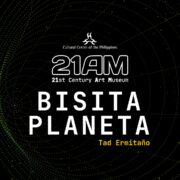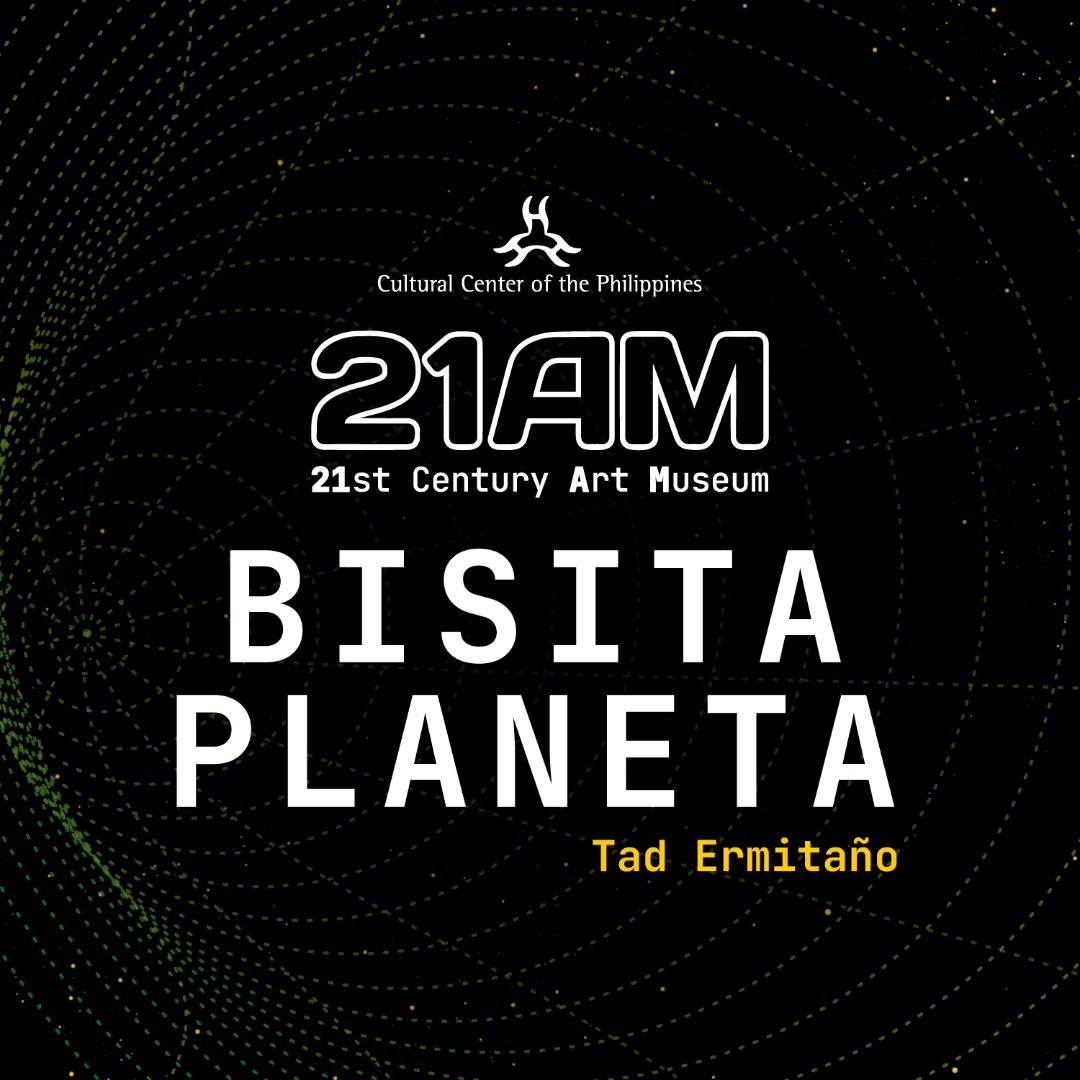
The Cultural Center of the Philippines, through its Visual Arts and Museum Division, presents “Bisita Planeta,” an interactive generative audio composition that can only be listened to in its contrapuntal entirety online, via the 21st Century Art Museum (21AM) website, starting September 21, 2023, running until 2024.
The exhibit is the second commissioned work for CCP’s 21AM, created by sound artist Tad Ermitaño who is a key figure in new media art in the Philippines and Southeast Asia. Starting his practice in the late 1980s, he co-founded the media collective Children of Cathode Ray, along with Jing Garcia, Regiben Romana, Magyar Tuason, Blums Borres, and Peter Marquez. Children of Cathode Ray (CCR) was one of the first experimental sound art groups in the Philippines.
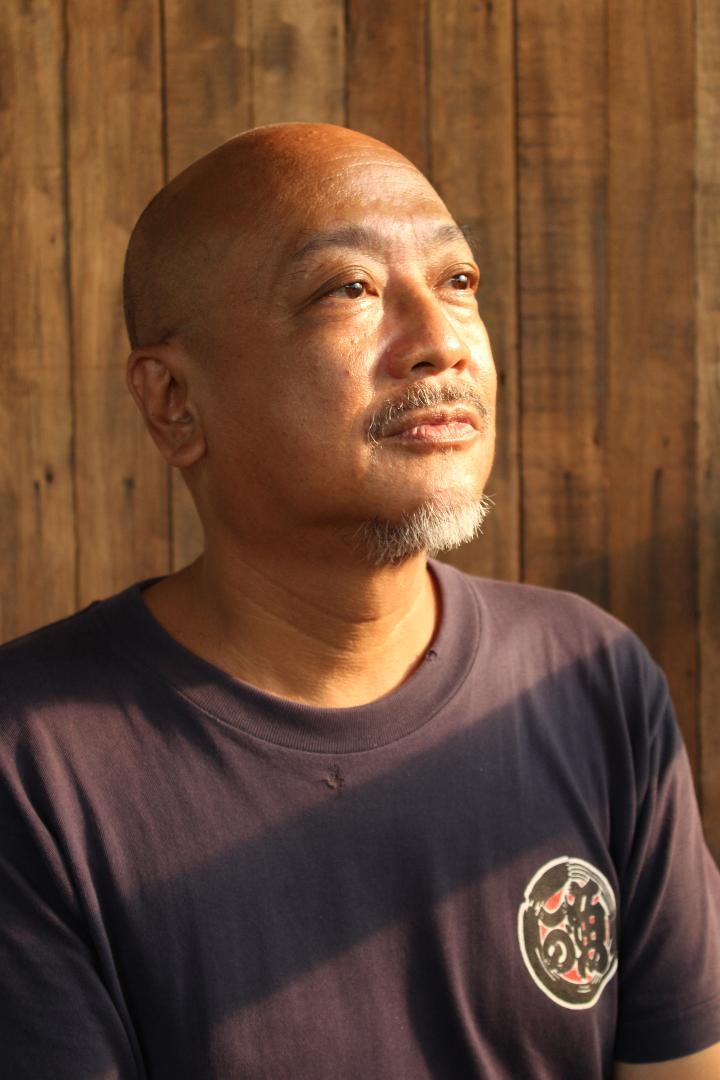
Ermitaño graduated from the Philippine Science High School in 1981, studied Zoology at the University of Hiroshima, and finished a philosophy degree from the University of the Philippines. He trained in video and film production at the Mowelfund Film Institute. His works incorporate artist-created circuits, computer programs, and physical machinery in performances and installations. Notable among his interactive installations are Quartet, (SG 2008); Gangsa (SG 2013); Twinning Machine (SG 2014); and Uwang, (Art Fair Philippines 2015).
Emerging as an artistic response to the inevitable intersection of the digital and the tangible, Bisita Planeta echoes its mission of multi-locality and its conceptual direction of enabling artistic explorations that probes art’s bordered categories, specifically in this work that combines music, sculpture, mechanical, and digital technologies, performance and interactivity.
From the excerpt of the exhibition text: at its essence, Bisita Planeta serves as an artistic venture delving into the intricate interplay between human interactions and the auditory landscapes that manifest across both physical and digital worlds.
This project encompasses a dual facet – physical and virtual. The physical dimension comprises four musical instrument artworks that transmit sounds to the internet. As the instruments send live audio over the internet to the Bisita Planeta website, each instrument is hosted at a physical location that is open to the public.
Playing different parts of a composition, the automated instruments are placed in the Bulwagang Roberto Chabet at the 3/F Tanghalang Ignacio B. Gimenez (CCP Blackbox Theater), the Parola UP Fine Arts Gallery at UP Diliman, the Alitaptap Art Café at the Alitaptap Artists Community (AAC) in Amadeo, Cavite City, and the Linangan Art Residency in Alfonso, Cavite.
Anyone who is inclined to do so may visit, inspect and listen to the machine in situ. This mechanism adds aspects of pilgrimage and collection to the work, encouraging members of the audience to visit its distributed, far-flung machines as proof of having completed the set of possible visitations. This aspect of a physical pilgrimage is what the title refers to, the other half being the website, where all the parts played by all the instruments may be listened to simultaneously.
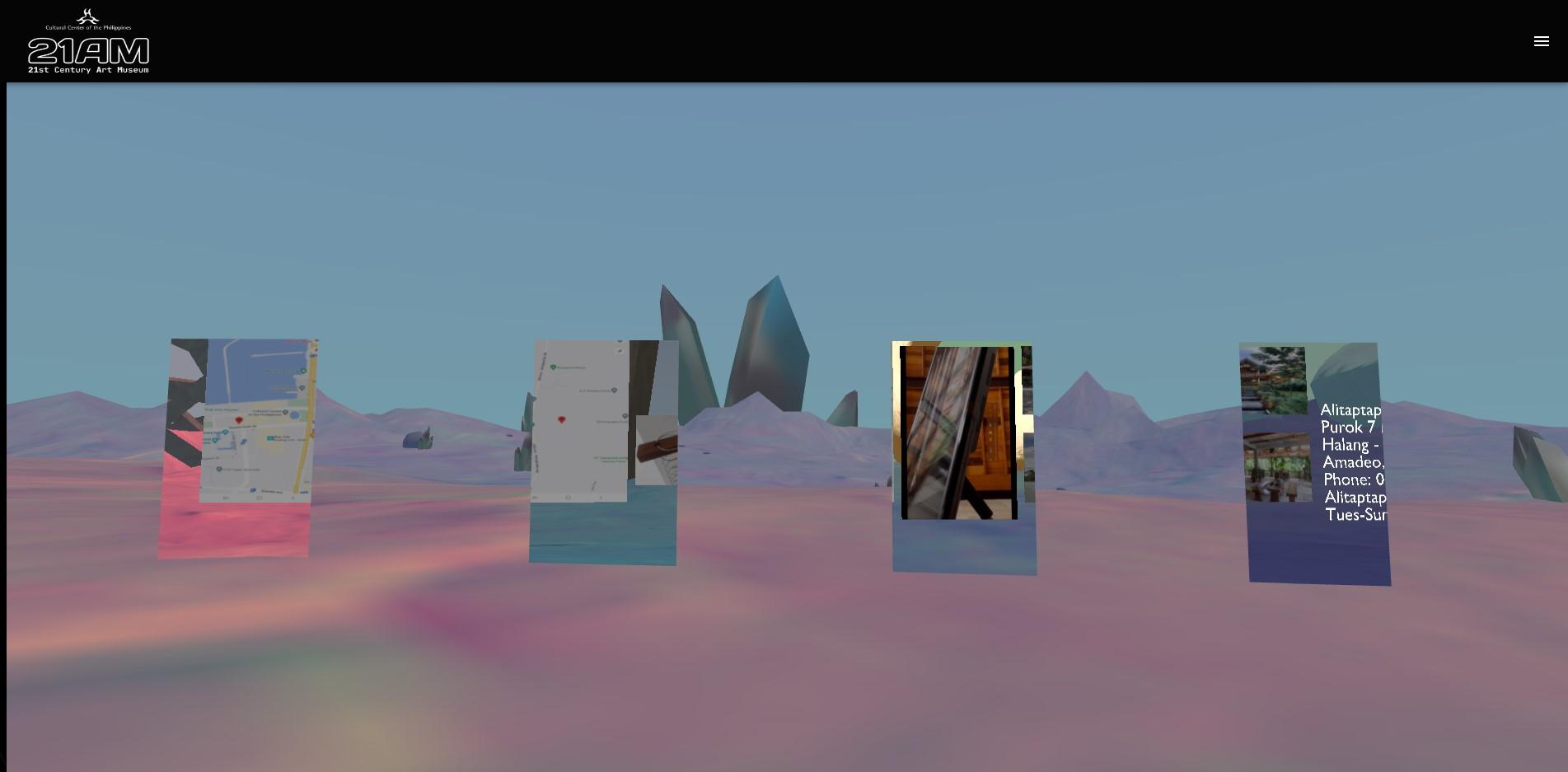
The virtual facet embodies a 3D game-like website, a portal where these sonic transmissions converge and resonate simultaneously. Visitors can explore the virtual worlds via their phones or laptops and discover information about the real-world locations of these sonic transmissions. The artist encourages the viewer to go on an “auditory pilgrimage,” tracing the sources of music while reflecting on how we experience social interactions online and/or offline.
Bisita Planeta juxtaposes the real world as perceived by our senses to the virtual world also presenting for the audience’s inspection and meditation some of the ways the two reflect and intersect. The title alludes to the fantasy/science-fiction trope of space-time wormholes/portals to other worlds and planets, while also referencing the Filipino practice of Visita Iglesia.
“The work is a metaphor and a robotic embodiment of the intersection of the real, physical, world, and the virtual environment to which so many of our social interactions have been moved since the recent pandemic forced us all to distance ourselves physically from one another,” said Ermitaño.

Visitors can participate in an unrepeatable experience, dependent on the space delimited by their bodies, and on the “now-line” of the present moment.
The 21st Century Art Museum (21AM) is a digital museum built to enable contemporary artists to engage in the structure itself and the repercussions of cyberspace on human life as Filipino. It is the CCP museum that seeks to enhance the intellectual, aesthetic, and community-building possibilities inherent in the consolidation of the CCP’s visual arts, ethnographic, ethnomusicological, scenographic articles from performative traditions, and other art-associated articles into a single collection that is provocative of contemporary artmaking.

This museum theorizes, enlivens, and sustains multiple contemporary art practices and trajectories, in particular relation to the perspective set, firstly, by the performative contexts of many artworks and instruments in its collection; and secondly, by the performance-driven activities of the CCP.
21AM acknowledges the fluidity of the boundaries between tangible and intangible heritage; and between objects and performance.
The move to digitally consolidate the Cultural Center of the Philippines Collection was part of its 50th anniversary in 2019, vis-à-vis a project in forming a single database for the visual arts and ethnographic collection. This was done through the introduction of a custom-built system that collects information on materials, processes, relative dates, provenance, among others; to record and catalog the collection, placing the highest importance in the work’s ‘process of making’ within the hierarchy of data.
The repository of the CCP 21st Century Art Museum (21AM) website, a continuing venture, hopes to contain information about and documentation of more than two thousand artworks and ethnographic objects from the collection. To activate engagement, the site has spaces for endeavors that utilizes cyberspace as an alternative venue for exhibition-making, education, discourse, and the archives.
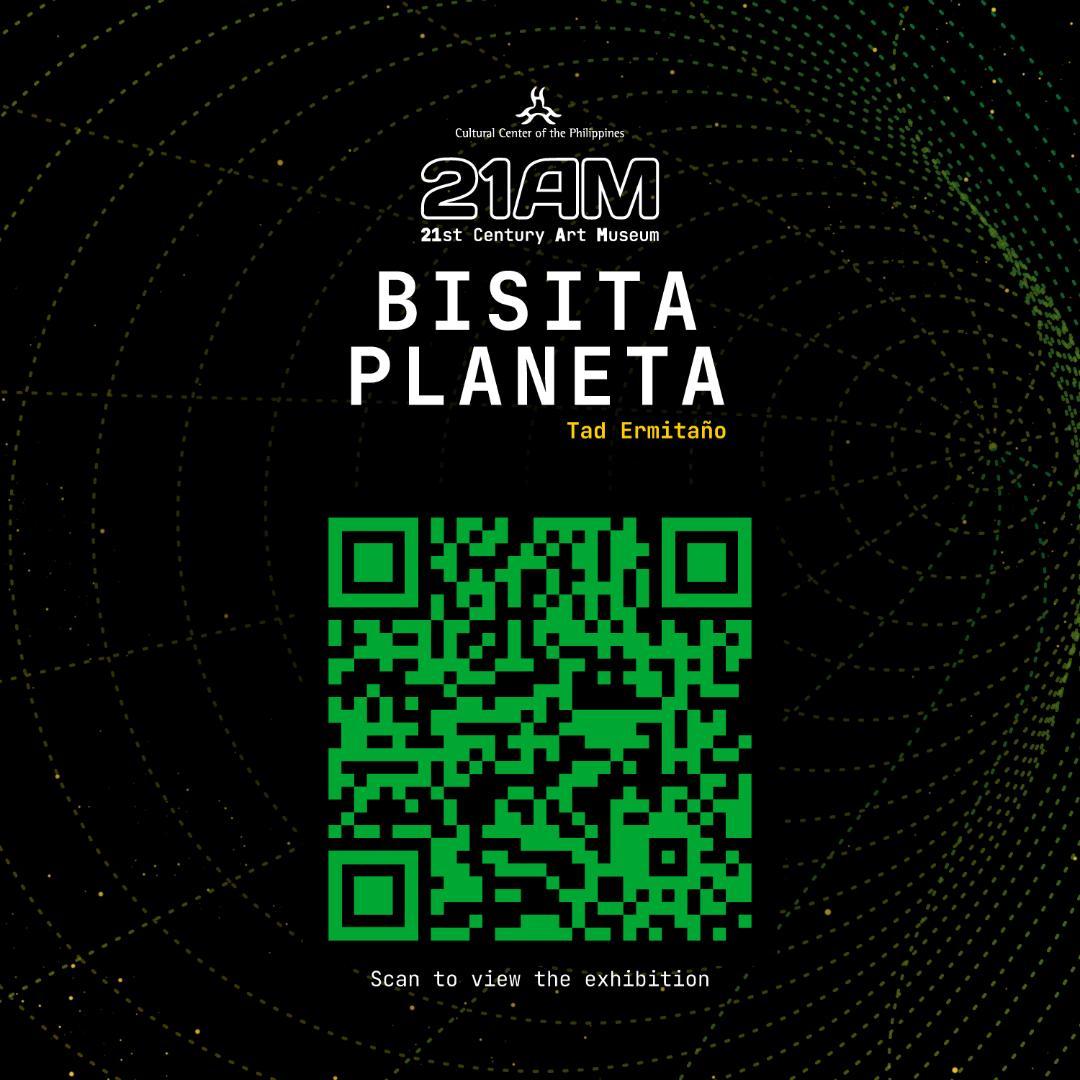
Catch the Bisita Planeta exhibition at the 21am.culturalcenter.gov.ph/en/exhibits and at the four partner art spaces in the Bulwagang Roberto Chabet at the 3/F Tanghalang Ignacio B. Gimenez (CCP Blackbox Theater), the Parola UP Fine Arts Gallery at UP Diliman, the Alitaptap Art Café in Amadeo, Cavite City, and the Linangan Art Residency in Alfonso, Cavite.
Follow the official CCP and CCP VAMD social media accounts in Facebook, Twitter, Instagram, TikTok, and YouTube. Visit the CCP website for more information on the center’s shows and productions.


